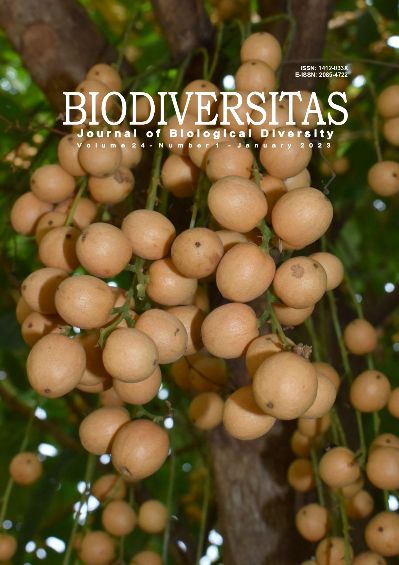Antioxidant activity of various solvent extracts from endophytic bacteria isolated from girang (Leea indica) leaves
##plugins.themes.bootstrap3.article.main##
Abstract
Abstract. Arivo D, Mubarik NR, Rusmana I, Batubara I. 2023. Antioxidant activity of various solvent extracts from endophytic bacteria isolated from girang (Leea indica) leaves. Biodiversitas 24: 415-422. Girang (Leea indica) is one of the medicinal plants with various bioactive compounds that act as an antioxidant. However, isolating these bioactive compounds need a significant amount of biomass. Endophytic bacteria can be a good solution to produce the same bioactive compounds as their host. This study determined whether the potential isolate produces high antioxidant activity in various solvents, phytochemical screening, determination of total flavonoid and phenolic contents, and identification of the isolate. The BT4 isolate was isolated from L. indica leaves. The supernatant of BT4 was extracted in fractionated extraction. The antioxidant activity was determined using a DPPH assay. Folin-Ciocalteu and aluminum chloride colorimetric methods analyzed the total flavonoid and phenolic content. The isolate was identified using the 16S rRNA method. The best IC50 was obtained from n-butanol extract with a value of 59.021±0.541 ?g/mL. The flavonoid and phenolic contents from n-butanol extract have the value of 4.686±0.476 mgQE/g extract and 31.406±0.716 mgGAE/g extract, respectively. The BT4 isolate contained flavonoids, saponin, tannins, terpenoids, and steroids and was identical to Bacillus tequilensis with 99% similarity. This study revealed that endophytic bacteria from L. indica leaves could be a potential source of the novel natural antioxidant compound.

